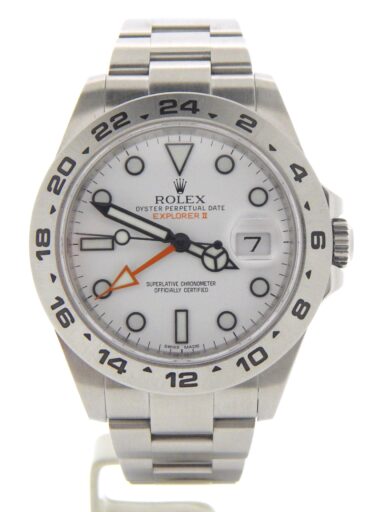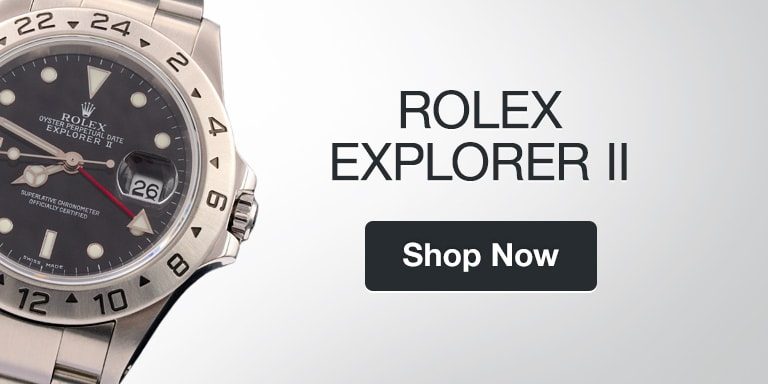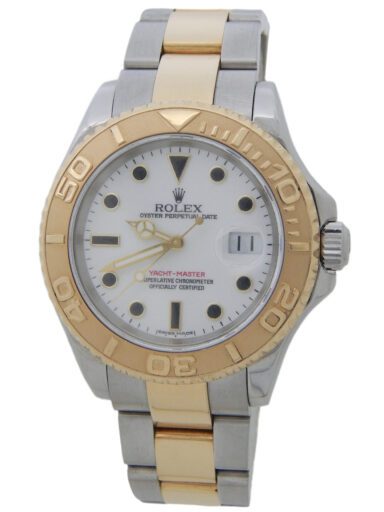The Best Rolex Watches to Celebrate Labor Day
This September 2nd, America holds its annual Labor Day celebration.
The now-federal holiday was initially proposed in the late 19th century as a way to mark the achievements of the country’s workers and their contributions to building America’s strength and prosperity.
Oregon was the first state to pass a law recognizing an official Labor Day in 1887 and in 1894, Congress approved a bill that made the first Monday of every September a legal holiday.
Now, as a Brit, this is all a bit strange. We don’t have a Labor Day, and not just because the word is missing a ‘u’. In fact, we don’t have any holidays specifically commemorating the U.K. workforce at all, which is why we’re always so miserable. But we don’t hold anything against you.
On the contrary, it gives us a chance to indulge in a little conjecture. Hard workers deserve a hardworking watch and there is obviously only one brand which fits the bill there. And, with Rolex being the manufacture to actually invent the concept of the tool watch in the first place, that links up nicely too.
However, one thing even us non-Americans know is you don’t wear white after Labor Day. I wasn’t sure why so I looked it up and it seems to have something to do with snobbery, so that seems like something which would appeal to the English as well.
To that end, we are going to showcase three Rolex watches that are both tough as nails and which give you one last chance to wear white before packing away your summer things in preparation for the Fall.
(Which is pronounced autumn).
Best Rolex Watches For Labor Day
The Rolex Explorer II ref. 216570
If we’re looking for a Rolex renowned for its durability and with a famously white dial, there really is only one place to start.
Of all the models in the brand’s Professional Collection, the official name for Rolex’s sports/tool watches, the Explorer II is the one which has always stayed closest to its roots.
Practically every other piece in the line-up has become at least a little gentrified in recent times, with solid gold or Rolesor variants introduced across the board. Even that paradigm of humble simplicity the original Explorer was graced with a two-tone version in 2021.
Not so the Explorer II. From its debut in 1971 it has always remained a nothing-but-steel offering, with the whole watch head carved from a single satin-brushed block.
The lack of a rotating bezel might mean it can track one time zone fewer than the GMT-Master, but what it loses in functionality it makes up for in sheer bombproof ruggedness.
The ref. 216570 came out in 2011 for the watch’s 40th anniversary and was the biggest departure yet from previous generations. The most obvious upgrade was in size.
The first reference had measured 39mm, but all subsequent iterations rounded that up to 40mm. The ref. 216570, however, was the first to go beyond those dimensions when it appeared as a 42mm, further adding to the model’s aura of invincibility.
To balance out the larger case, Rolex installed a Maxi dial, with oversized indexes and fatter handset. They also reinstated the beloved Freccione second hour hand, a much-missed detail absent since the ‘70s.
As for the options, and underscoring the Explorer II’s utilitarian charisma, this new model came with the typically not-at-all exhaustive choice of two dial colors; black or white
Each has its own appeal, and I’ve always had a soft spot for the ‘phantom’ hands on the black version, where they appear to float around the spindle because their bases are also painted black. But the white, or ‘Polar’, dial is arguably Rolex’s most well-known use of the color in their history.
It changes the personality of the watch entirely, providing a real lift and giving the whole thing a less serious, more lighthearted edge. Readability is still excellent, with the hour markers and hands receiving a thick black outline which really stands out.
Inside is the Cal. 3187 meaning the two hour hands can be set independently of each other, marking the reference as a true GMT, and it is, of course, a Superlative Chronometer.
All-in-all, the ref. 216570 remains one of the purest Rolexes you can buy, and with prices starting at around $12,500, it is among the most attainable too.
The Rolex Yacht-Master ref. 16623
Rolex’s Yacht-Master may have been brought in as a more genteel alternative to the hyper-rugged Submariner, but since its foundations were very much based on that diving legend, it is still an extremely durable watch.
It is also one of Rolex’s most diverse collections. Within its current family you will find examples in all three colors of solid gold, alongside Everose Rolesor and two other metals which occur hardly anywhere else in the brand’s portfolio.
With the exception of the enormous and ludicrous Deepsea Challenge, the Yacht-Master range is the only place you will see Rolex utilize titanium, with the 42mm ref. 226627. And the combination of steel case and platinum bezel known as Rolesium is the exclusive preserve of the Yacht-Master series.
The ref. 16623 was introduced in 2005, and was, surprisingly enough, the first 40mm example offered in yellow Rolesor. That’s despite the collection as a whole being around for 14-years by then.
The similarities between it and the Sub had been pretty transparent from the outset, but many fans bought the Yacht-Master both for its sleeker lines and its more refined demeanor. And with the full-size (as it was at the time) ref. 16623, they were presented with another bonus option the Submariner has never had.
As well as dials in blue, grey, champagne and mother of pearl, the watch could be had with a white face which had a wonderfully summery feel.
Like the Explorer II above, contrast came from having black hour markers but here, both the indexes and the handset were ringed in yellow gold, picking up the tones coming from the bezel and bracelet’s central links perfectly. Strangely, unlike every single other Rolesor watch Rolex makes, the two-tone Yacht-Masters have steel crowns rather than gold.
The reference was powered by the definitive Cal. 3135, as was just about every other time-and-date Rolex from the late ‘80s up to the mid 2010s. Recognized as perhaps the best mass-produced movement of its type ever made, it provides no-nonsense and flawless precision.
Nowadays, the ref. 16623 is considered as just entering into neo-vintage territory and, as such, has become a target for investors. However, prices are still extremely reasonable, with $12,000 or thereabouts securing a prime example.
The Rolex Air-King ref. 114210
It seems only fitting to finish off an article celebrating the workers with one of Rolex’s most stylishly workmanlike creations.
The Air-King is among the longest-serving models in the marque’s arsenal, almost rivalling the Datejust. Both watches were actually released in the same year, 1945, but the Air-King dropped out of production very briefly between 2014 and 2016. It came back as a 40mm piece, but prior to that had sat at 34mm for its entire history.
Today, those dimensions single the watch out as a great unisex option and, of those retro references from the Air-King’s past, the ref. 114210 is a superb specimen.
Introduced in 2007, it took the model up to its two-year hiatus and was an archetypal blend of the old and new. So, while it stayed at 34mm, and was the last reference in that size, Rolex did issue the watch with a thicker case to add a touch of wrist presence. It was also the first to be chronometer-certified, benefitting from the Cal. 3130, the time-only variant of the above Yacht-Master’s excellent caliber.
And there was one other detail which is a favorite among Rolex’s more nostalgic followers.
The ref. 114210 came with an engine-turned bezel, something no longer found on any of the brand’s models. Featuring an arrangement of decoratively engraved patterns, the engine-turned surrounds represented something of a halfway house between the plain domed bezel and the fluted type. They added interest without being showy, and many fans, myself included, are eagerly awaiting the day they make a comeback.
One thing the Air-King never suffered from was a surfeit of dial choices. The ref. 1142XX series actually had more than most iterations, with a few bolder colors like salmon, olive green, red grape and royal blue coming in to bolster the usual monochrome suspects.
But the minimalist nature of the watch has always suited a white dial particularly well, and that option could be had with traditional Roman numeral markers or with Explorer-esque 3/6/9 indexes.
As always though, the most enticing draw of the Air-King lies in its price tag. With mint condition pieces selling for around $6,500 it is still one of the preowned watch market’s best bargains.
Featured Photo: TungArt7 via Pixabay (cc).












